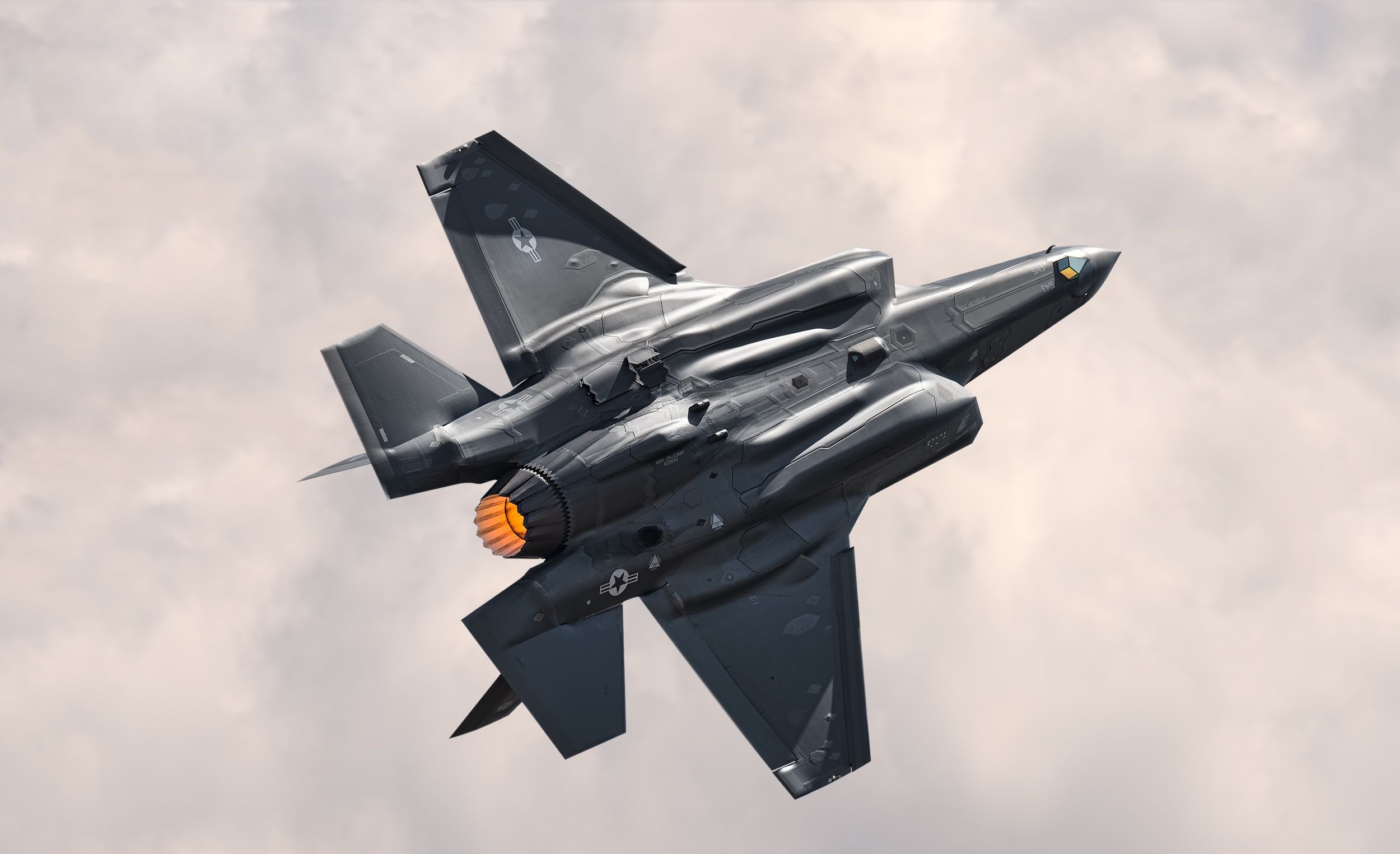The US Air Force has announced that F-35 maintenance experts are undertaking a seemingly “impossible” task – merging two aircraft previously damaged in accidents – to create a fully restored and operational F-35A Lightning II.
In a statement released on November 30, the US Air Force disclosed that the initiative, spearheaded by the F-35 Joint Program Office (JPO), demands a “dream team” comprising exceptionally qualified individuals from the JPO, the 388th Fighter Wing, the Ogden Air Logistics Complex, and Lockheed Martin.
Describing the initiative as a groundbreaking moment for the F-35 program, Dan Santos, F-35 JPO heavy maintenance manager, shared, “This is a first for the F-35 program and a very exciting project.”
The service explained that following a thorough feasibility study, the F-35 JPO, in collaboration with the 388th Fighter Wing, has chosen to reconstruct AF-211. This aircraft experienced a nose landing-gear separation incident in June 2020.
To achieve this, the damaged nose section of this aircraft is being replaced with the intact nose from AF-27, an F-35 that suffered a severe engine fire at Eglin AFB, Florida, back in 2014. AF-27 is utilized as an Air Force Air Battle Damage and Repair trainer stationed at Hill.

Moreover, “Along with Lockheed Martin, the F-35 Joint Program Office, and the 388th Fighter Wing, several units in the Ogden Air Logistics Complex, including the 570th Aircraft Maintenance Squadron, 576th Aircraft Maintenance Squadron, 809th Maintenance Support Squadron, and 309th Expeditionary Depot Maintenance Flight, are among the multiple units providing direct support,” according to the Hill Air Force Base.
Keith White, the contracting officer for the 388th Fighter Wing, highlighted that even though the jet is under the ownership of the 388th FW, it remains a component of an F-35 Joint Program Office (JPO) contract.
In this context, Lockheed is responsible for carrying out the required work. The service also specified that the project’s current status is notably ahead of schedule, with an anticipated completion date set for March 2025.
Why Is The JPO Pursuing This Program?
Over the past few years, the F-35 Joint Program Office (JPO) has actively sought opportunities to repurpose usable parts and systems from damaged F-35 aircraft and contribute to the ongoing efficiency of F-35 maintenance and operations.
Drawing from experience gained in recent salvage aircraft re-purpose projects, including establishing the first F-35 maintainer training facility and partially restoring a salvaged F-35 airframe for use as an Air Battle Damage Repair (ABDR) trainer, the F-35 JPO is now advancing these efforts with the “Franken-bird” project.
Leveraging a network of skilled professionals, resources, and facilities at Hill Air Force Base (AFB), the F-35 JPO initiated the project, with crucial support from the Ogden Air Logistics Complex, providing essential hangar space and heavy equipment.
The groundwork for this program began in January 2020 when the F-35 JPO approached Hill AFB, impressed by their previous accomplishments in significant damage restoration projects for the F-22, as noted by Scott Taylor, Lockheed Martin’s lead mechanical engineer.
For instance, in March 2023, the United States Air Force revealed that an F-22, damaged during a botched takeoff on April 13, 2018, once again took to the skies in May 2023, marking a successful five-year recovery effort.
With just 186 Raptors in the entire Air Force inventory, returning that formidable air-to-air fighter to operational status is a noteworthy accomplishment.
However, what distinguishes the latest project involving the F-35 is its comprehensive documentation to create standardized F-35 procedures rooted in a meticulous process. This marks a historic milestone in F-35 history, as noted by Taylor.

The Air Force said that new, specialized tooling, fixtures, and equipment have been designed and built to facilitate on-site work at Hill.
Notably, these tools are adaptable for transport and will benefit future operations in various locations, including forward operation areas.
Dave Myers, F-35 JPO Lightning Support Team lead engineer, noted the significance of this initiative in returning a combat asset to the warfighter and paving the way for repairing future mishap aircraft using the developed tooling, equipment, techniques, and knowledge.
While cannibalizing an aircraft might extend its recovery time, it played a pivotal role in expediting the return of the USAF’s fifth-generation aircraft to operational status and holds promise as a potentially cost-effective strategy.
- Contact the author at ashishmichel(at)gmail.com
- Follow EurAsian Times on Google News




